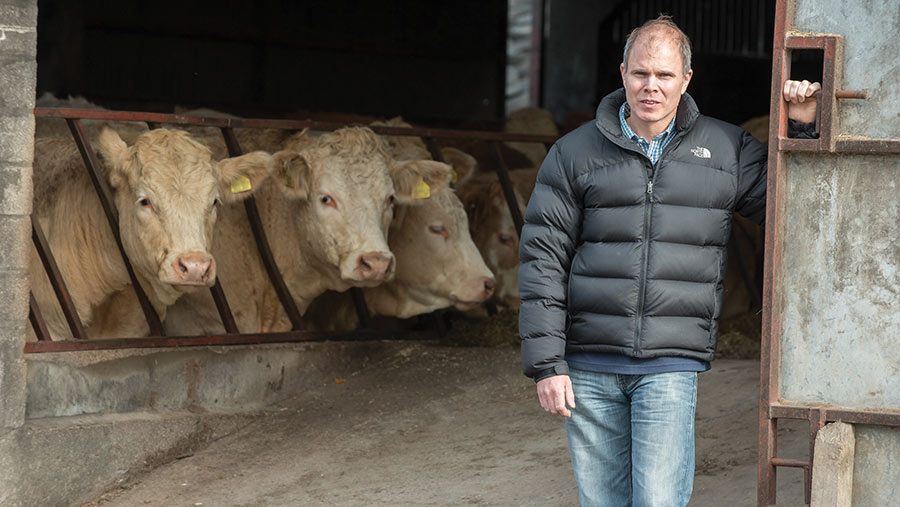Farmer Focus: Harvest finally wrapped up in October
 Robert Drysdale © Angus Findlay
Robert Drysdale © Angus Findlay With a return to rainy weather after 10 September, harvest slowed and was eventually completed on 3 October.
This is not unusually late, but it felt like a long harvest, starting on 20 July, only a day later than last year.
In the 75-day period, there were 16 days where there was no crop ready to cut.
We harvested on 53 of the remaining 59 days, though many of these were short days, starting well through the morning and stopped by rain or an early dew.
See also: New crop irrigation system recycles nutrients and water
The protracted spring barley harvest solved our issues of storage space, as it gave merchants time to clear the early cut crop.
By the time the last fields were cut, stores were full again and two weeks later there is still a significant tonnage to move.
Overall, the spring barley has performed well, with Laureate and Diablo averaging around 6.5t/ha, with generally low nitrogen and skinning levels of 2-8%.
Even the fields drilled in mid-May performed well and certainly prove that every year is different and that we have to farm to the conditions at the time and not the calendar.
Drilling has progressed well with the last fields of wheat drilled on 17 October. Wheat varieties were streamlined to Insitor, Bairstow and Skyscraper.
Early drilled fields are looking well, but 80mm of rain from a recent storm caused the river to flood, causing some damage.
With the forecast for the same or more at the end of this week there is the potential for some areas to be written-off within a few weeks of drilling.
Looking ahead, we are faced with challenges on the cost front.
This was highlighted today with a demonstration tractor requiring to be insured for an eye-watering sum and our insurer quoting a cost of £280 – for two days’ cover. Discussions are ongoing!
At the same time, grain prices remain stubbornly low and this may prompt a rethink of rotation for future years.
With winter barley and oilseed rape contributing little, there could be a justification for more rotational fallow, allowing a greater wheat area in the rotation.

